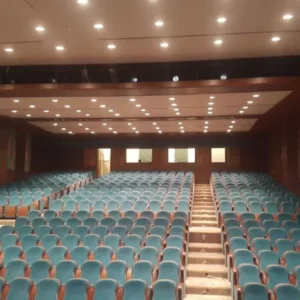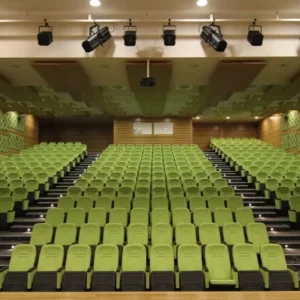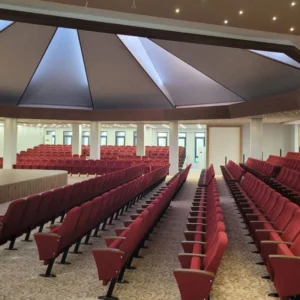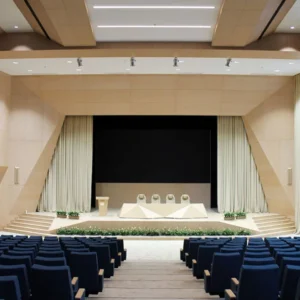When designing or upgrading an auditorium, choosing the right seating is not just a detail – it shapes the entire user experience and reflects the venue’s identity. For professionals in architecture, construction, and project management, understanding the different types of auditorium seats can make the difference between a good project and an outstanding one. Let’s dive into this world with insights that can add real value to your decisions.
Table of Contents
Types of Auditorium Seats
The term types of auditorium seats covers a wide spectrum, from fixed solutions for classic theaters to flexible setups for multipurpose venues. Professionals often ask: Which seating system adapts best to evolving venue needs? The answer lies in analyzing both the space and its usage.
Fixed seating remains a popular choice for conference halls and traditional auditoriums, offering robust anchoring systems that enhance stability. On the other hand, retractable or telescopic systems have been gaining attention in recent years. They allow venues to transform their layouts efficiently, making them perfect for schools, sports arenas, and event centers where versatility drives ROI.
Key Considerations in Choosing Auditorium Seats
- Load-bearing capacity: Structural calculations need to align with floor reinforcements.
- Fire safety compliance: Fabrics and foams must meet international flame-retardant standards (e.g., BS 5852, CAL 117).
- Acoustic performance: Seat design can influence room acoustics, especially in concert halls.
Have you ever considered how much acoustic absorption the seat fabric provides when unoccupied? This small detail can significantly impact the auditory experience, and professionals who pay attention to it gain a competitive edge.
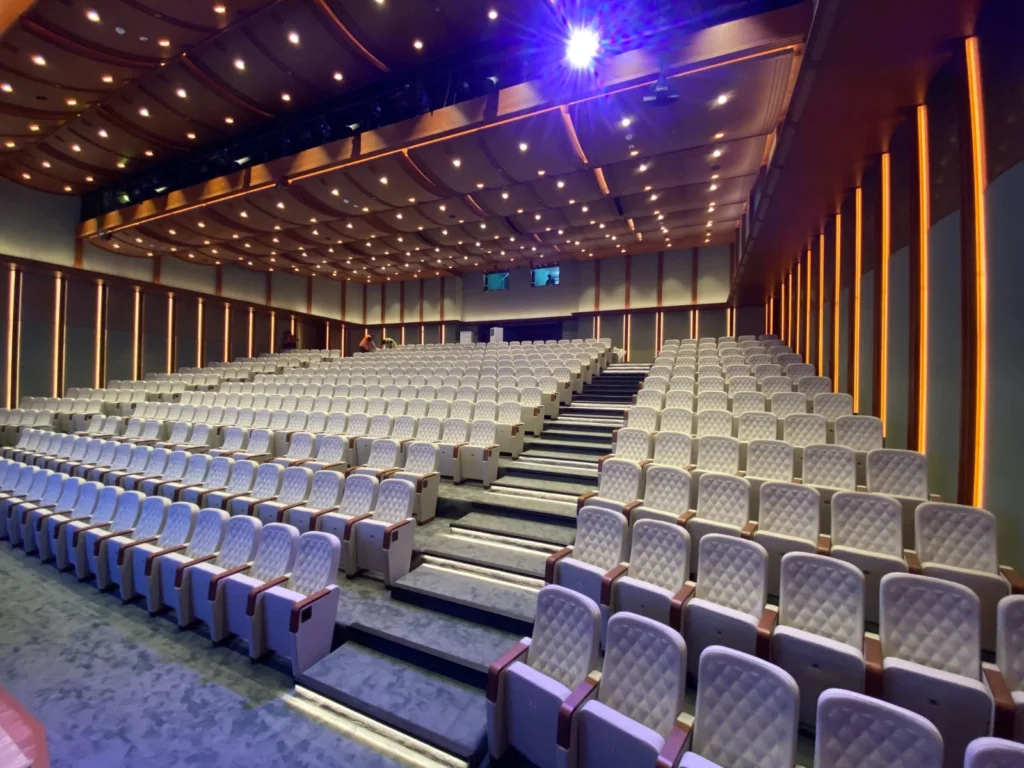
Exploring Different Auditorium Seat Types
When discussing auditorium seat types, it’s essential to go beyond the basics. These seats range from classic wooden backs with upholstered cushions to fully upholstered high-back models offering exceptional support during long events.
Upholstered Seats with Integrated Amenities
These models often integrate cup holders, writing tablets, or power outlets, enhancing user comfort during conferences. While they require higher upfront investment, their added features boost audience satisfaction.
Wooden Shell Seating
Preferred in heritage or formal venues, wooden shells add a timeless character while meeting modern standards. Pairing them with fire-resistant finishes can maintain safety without compromising aesthetics.
Theatre Seat Varieties That Professionals Appreciate
In the realm of theatre seat varieties, the choices reflect tradition and innovation alike. Theatre owners frequently ask: How can we combine classic aesthetics with modern audience expectations? The solution lies in hybrid designs – keeping the traditional look while integrating ergonomic support and silent tip-up mechanisms.
Silent Tip-Up Systems
A noiseless folding mechanism avoids distracting sounds during performances, a detail that experienced professionals know audiences value greatly.
Luxury VIP Configurations
For premium areas, larger spacing (up to 600 mm / 23.6 in) between rows and plush materials enhance exclusivity. These seats may also include armrests with embedded LED lights or discreet control panels.
Venue Seating Styles That Transform Spaces

Choosing the right venue seating styles can redefine how a space functions. Modular systems allow rapid reconfiguration, perfect for venues hosting various event types.
Retractable Auditorium Seating for Dynamic Spaces
Retractable auditorium seating solutions can be operated manually or via motorized systems. They save storage space and allow full floor use when the seating is retracted. Professionals should consider the load-bearing specifications (typically 300 kg/m² or 61 lb/ft²) to ensure long-term reliability.
Have you thought about how retractable systems impact event turnover time? Faster transitions mean more events, higher utilization, and increased revenue potential.
Innovative Auditorium Chair Designs
When it comes to auditorium chair designs, customization plays a crucial role. Architects and decision-makers can choose from a range of finishes, from antimicrobial fabrics for healthcare facilities to stain-resistant coatings for high-traffic environments.
Custom Auditorium Seat Designs for Unique Projects
Customizing seats ensures that the venue’s identity is fully reflected. Whether integrating corporate branding or designing for specific acoustic requirements, tailored solutions often deliver the most satisfaction for clients and end-users alike.
Modern Auditorium Seats with Advanced Features
Modern auditorium seats now integrate smart technologies, such as IoT sensors for seat occupancy and climate control. These innovations not only enhance audience experience but also provide valuable data for facility management.
Concert Hall Seat Types Worth Considering
Concert venues have unique requirements, making concert hall seat types a topic of interest for industry experts. Unlike multi-use halls, concert halls demand seats that support perfect sound projection.
Acoustic Optimization Through Seat Design
Special seat bases with sound-absorbing panels help maintain consistent acoustics whether the hall is full or empty. Professionals working with orchestral venues know how vital this consistency is to performers and audiences alike.
Durable Auditorium Seats for Long-Term Use
Durability is non-negotiable. Durable auditorium seats crafted from high-grade steel frames and high-resilience foams withstand heavy usage over decades. Investing in long-lasting seating reduces lifecycle costs, making it a smart move for any project.
Final Thoughts for Industry Professionals
Selecting the right seating system is more than a technical choice – it’s about shaping the audience’s experience while meeting the project’s functional goals. Whether opting for custom auditorium seat designs or exploring auditorium furniture trends, every decision influences the venue’s success.
Have you identified which seating configuration aligns with your venue’s long-term strategy? Considering flexibility, acoustics, and user comfort together often leads to the most rewarding outcomes.
By understanding the nuances of types of auditorium seats, you’re not just specifying furniture – you’re crafting an environment where every seat supports the venue’s vision. And that’s what sets outstanding projects apart.


